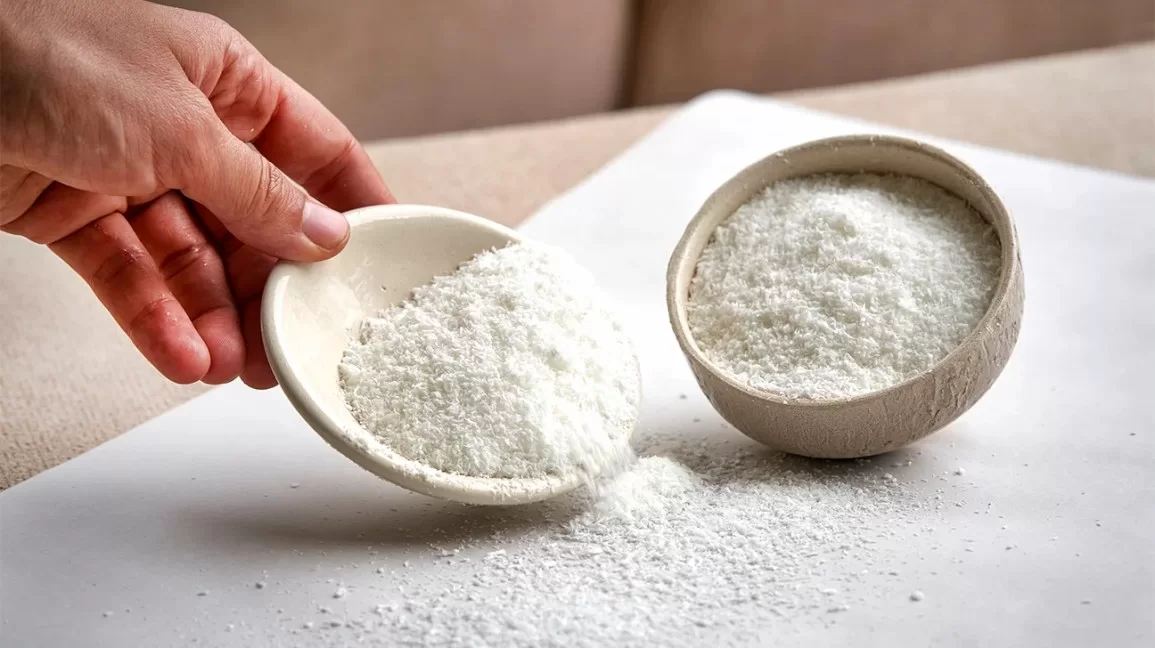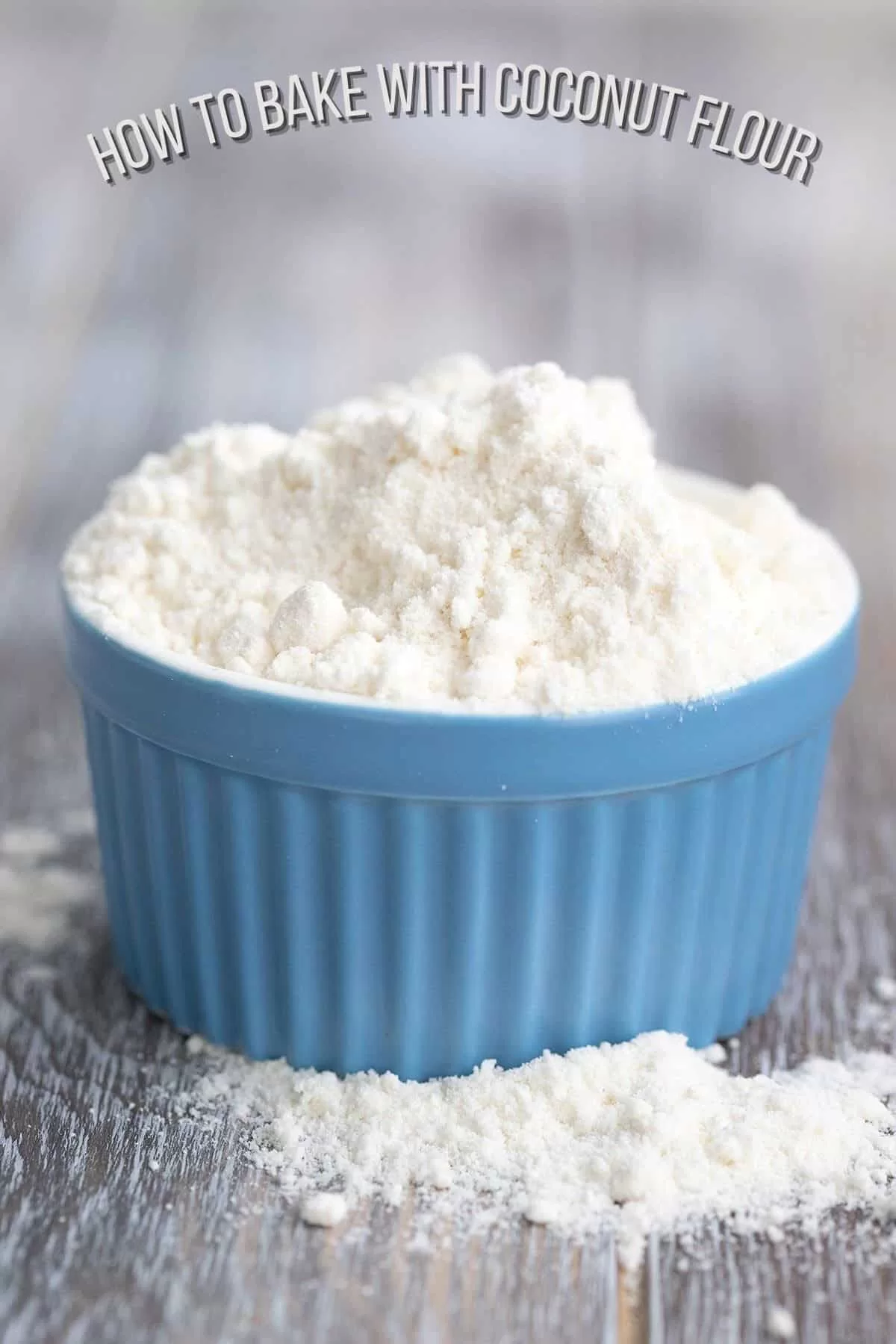Did you know that approximately one in eleven adults worldwide are affected by type 2 diabetes, and the numbers steadily rise? The prevalence of this disorder has led to people constantly seeking ways to manage and keep their blood sugar levels in check without compromising on taste and variety in their diet. One such versatile ingredient that has piqued the interest of many individuals with type 2 diabetes is coconut flour. Would you believe that this wonderful product is made from the meat of the humble coconut? In this blog post, let us explore coconut flour and how it can be a game changer for those battling type 2 diabetes and striving to maintain a delicious and satisfying diet.

1. Introduction to flour options for diabetes
Living with type 2 diabetes requires being mindful of your food choices, especially when it comes to selecting the right kind of flour for your baking needs. Thankfully, a variety of low-glycemic flours available can satisfy your cravings for bread, muffins, and other baked treats without causing a spike in your blood sugar levels. In this article, we will introduce you to some excellent flour options that are not only diabetic-friendly but also packed with protein, fiber, and other health benefits. So, let’s explore these alternatives to ensure you enjoy your favourite foods without compromising your health.

2. Importance of slow-absorbing, low-carb, and high-fiber flours
As someone with type 2 diabetes, you need to focus on slow-absorbing, low-carb, and high-fiber flours in your diet. These flours can help control your blood sugar levels as they release sugar slowly into the bloodstream, preventing spikes. Additionally, high-fiber flours aid digestion and help maintain a healthy weight, which is essential for managing type 2 diabetes. By choosing flours such as almond, coconut, chickpea, or oat flour, you can enjoy your favourite baked goods without negatively impacting your blood sugar levels.
3. The effects of flours on blood sugar levels
In managing Type 2 diabetes, it’s essential to be mindful of your blood sugar levels, and the types of flours you use in your diet can have a significant impact. Flours like almond, tiger nut, soy, coconut, and spelt are great choices as they are low on the glycemic index, which means they have a minimal effect on your blood sugar. Among these options, coconut flour is an affordable alternative, with a glycemic index of around 49-51 and a unique flavour to your baked goods. These flours let you enjoy your favourite recipes without worrying about blood sugar spikes.
4. Benefits of high-fiber flours with the low glycemic index
Incorporating high-fiber flours with a low glycemic index into your meals offers numerous benefits, especially for those with type 2 diabetes. Consuming low glycemic index flours, such as coconut flour, can help regulate blood sugar levels by slowing the absorption of sugar into your bloodstream. High-fiber flours promote a feeling of fullness that prevents overeating and weight gain, which is crucial for diabetes management. Additionally, a fibre-rich diet supports healthy digestion and heart health, making it a smart choice for everyone.

5. Advantages of protein-containing flours for diabetes management
Incorporating protein-containing flours, like coconut flour, into your diet can offer numerous benefits for managing type 2 diabetes. Firstly, coconut flour is high in fiber, which slows down the release of sugar into your bloodstream, promoting healthy blood sugar levels. Secondly, being low in carbohydrates and rich in plant-based protein, coconut flour supports better blood sugar regulation. Additionally, coconut flour has a lower glycemic index, which minimizes spikes in blood sugar after consumption. Lastly, coconut flour’s nutrients, like potassium, iron, and vitamins, contribute to overall health and well-being.

9. How to adjust recipes with coconut flour for diabetes-friendly baking
Adjusting recipes with coconut flour for diabetes-friendly baking is simple and enjoyable. Start by substituting 1/3 cup of coconut flour for each cup of regular flour. Remember that coconut flour requires more liquid and eggs due to its high fiber content and gluten-free nature. Add 4 to 5 eggs for every cup of coconut flour used. You may also need to increase the total amount of liquid in the recipe accordingly. Feel free to experiment with your favourite recipes; soon, you’ll enjoy delicious, diabetic-friendly baked treats easily.

Coconut flour and its Benefits for Diabetes Patients
If you have type 2 diabetes, incorporating coconut flour into your baking can be a great way to enjoy your favourite treats while managing your blood sugar levels. Coconut flour is low in carbs and high in fiber, which helps slow down the absorption of sugar in the bloodstream. To adjust your recipes for diabetes-friendly baking, start by replacing 1/4 cup of regular flour with coconut flour in your recipes. Remember that coconut flour absorbs more liquid, so you may need to increase the total liquid content of the recipe accordingly. Enjoy coconut flour’s a slightly sweet flavour and health benefits in your baked goods!

How to use coconut flour in baking recipes for diabetes-friendly options
If you want to make your baking recipes more diabetes-friendly, coconut flour is an excellent choice due to its low carbohydrate and high fiber content. Substitute about 1/3 cup of coconut flour for every 1 cup of regular wheat flour. Since coconut flour absorbs more liquid and lacks gluten, you’ll also need to increase the number of eggs in your recipe – add 4 to 5 eggs for every cup of coconut flour used. Remember that experimenting with ratios and trying out recipes specifically designed for coconut flour will yield the best results. Enjoy creating healthier, delicious baked goods for you and your loved ones!

Substituting coconut flour for regular flour in recipes for better blood sugar control
Substituting coconut flour for regular flour in your recipes can be a game-changer for better blood sugar control. Being low in carbohydrates and high in fiber, coconut flour is a fantastic alternative for those with type 2 diabetes. To make the switch, start by replacing 1/4 cup of regular flour with 1/8 cup of coconut flour, and also adjust the liquid contents of the recipe since coconut flour is highly absorbent. Take it one step at a time, and soon you’ll be easily enjoying delicious, diabetes-friendly baked goods!

Delicious coconut flour recipes for diabetes patients to enjoy
If you have type 2 diabetes, incorporating coconut flour into your recipes can be a delicious and healthy way to indulge in your favourite baked goods. Coconut flour is low in carbohydrates, high in fiber, and gluten-free, making it an excellent choice for blood sugar management. To use coconut flour in your recipes, start by substituting 1/4 cup of coconut flour for each cup of regular flour. Remember to increase the liquid content and add extra eggs to compensate for their absorptive properties. Experiment with your favourite recipes like pancakes, muffins, or biscuits, and enjoy the subtly sweet taste of coconut flour in your diabetes-friendly treats.

10. Conclusion and summary of recommended flours for diabetes management
In conclusion, managing diabetes effectively requires mindful choices in your diet, including the types of flours you use in your recipes. To maintain stable blood sugar levels, opt for diabetic-friendly flour such as almond flour, coconut flour, chickpea flour, oat flour, and spelt flour. These alternatives offer more fiber, healthy fats, and proteins that help control blood sugar spikes while providing essential nutrients. So, go ahead and confidently enjoy your favourite baked goods, knowing that you’re making a smarter choice for your health.
🔬 Reviewed for Scientific Accuracy by:
With over 15 years of academic and clinical experience, Dr. Gautam oversees the scientific and editorial integrity of educational content related to herbs, nutrition, and wellness.
ResearchGate Profile | ORCID
Dr. Khurana brings deep expertise in nutraceutical formulation, phytochemistry, and metabolic health. He reviews FarmPURE content to ensure alignment with evolving biochemical and plant-based research.
ORCID
All FarmPURE Blog content is reviewed by domain experts to ensure it reflects the highest standards of botanical integrity, scientific relevance, and practical guidance. Our mission is to promote better health and beauty through the power of organic herbs, spices, and plant-based wellness solutions.
Disclaimer: The information provided in this blog is intended for general wellness and educational purposes only. It is not a substitute for professional medical advice, diagnosis, or treatment. Dr. Rashmi Gautam and Dr. Nikhil Khurana participate as scientific reviewers only, and do not provide or endorse personalized medical recommendations. Always consult a qualified healthcare provider before making decisions related to your health.

